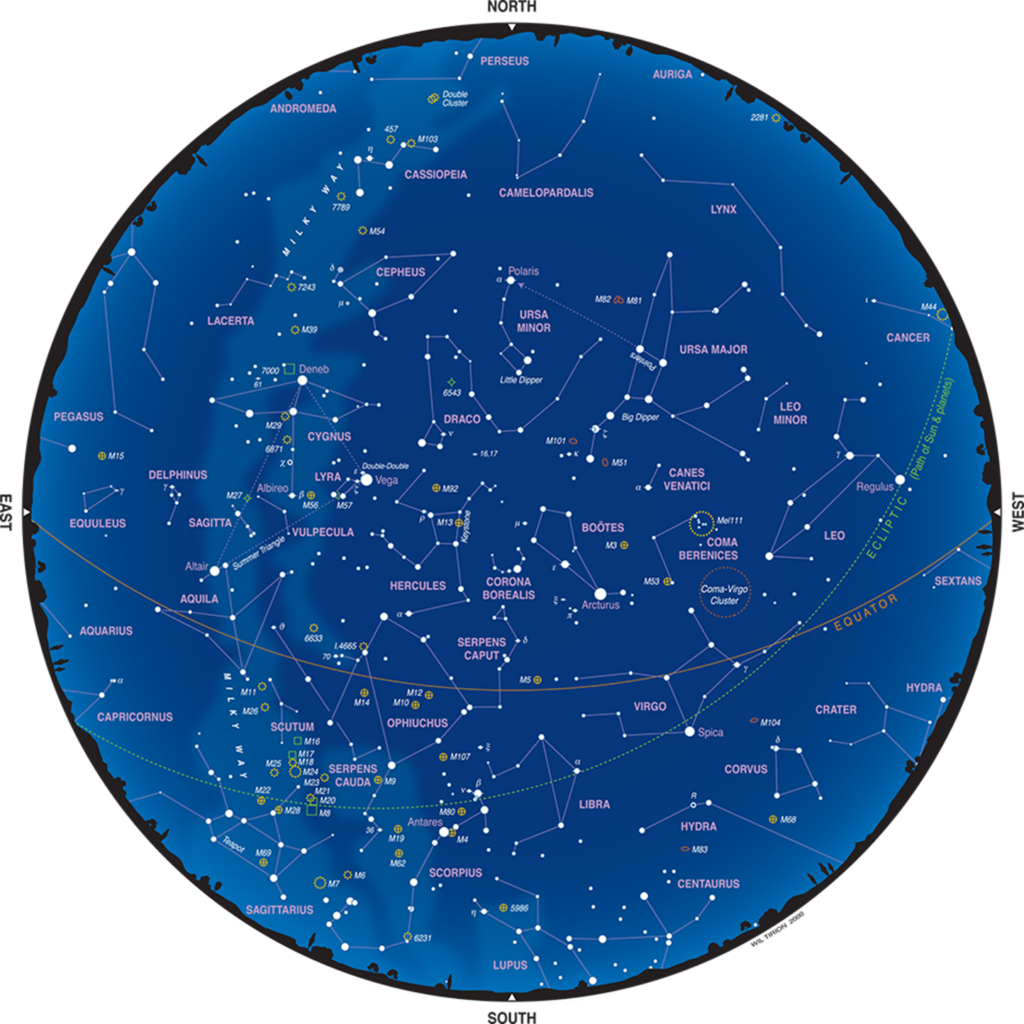by Astronomer Jim
June Mornings
During June, in the early pre-dawn sky, all our solar system’s unaided eye visible planets can be seen at one time—that means Mercury, Venus, Mars, Jupiter, and Saturn, and they will be lined up in the same order as their distance from the sun! With the help of a (large) telescope, Uranus and Neptune will be visible too, plus the brightest asteroid, Vesta.
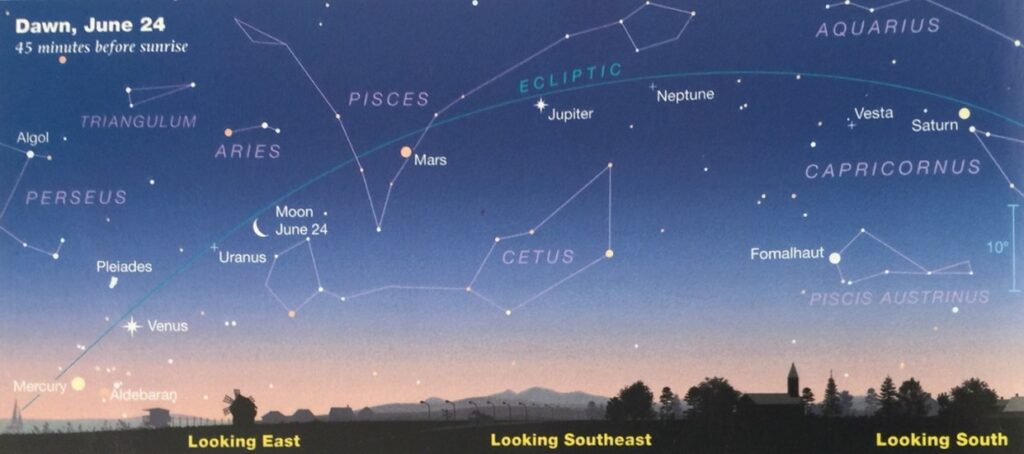
- Mercury, as always, will be close to the rising sun and only easily visible in the later part of the month. On June 27th, a thin crescent moon will be only 3.5 degrees above Mercury, making Mercury relatively easy to see.
- Venus will appear the brightest of all the planets, but its proximity to the sun will appear to dampen its brightness. On the 24th, Venus and the Pleiades will be in the same binocular view. On the morning of the 26th, the crescent moon and Venus will be only 2½ degrees apart, making for a very fun observation!
- Mars will be the “reddish looking star” just to the left of bright Jupiter if you’re looking southward.
- Jupiter will be southeast and, except for Venus and the moon, the brightest object in the sky at -2.5 magnitude.
- A 1st magnitude star is a bright star. Jupiter is so bright that it often has a negative magnitude. However, Venus’s magnitude is -3.3 and Mars, for this month, is basically 0.0 magnitude.
- Saturn rounds out the early morning planet show, gleaming due south all month long.
- On June 21st, we’ll have the longest day of the year in the northern hemisphere. Let summer begin!
June Nights
- No late-night planets and no (known) meteor showers during this June.
- A comet (PanSTARRS) will be in the night sky in the constellation of Ophiuchus, but it is expected to be dim and will require a large telescope to observe.
- However, there are always interesting things to see. Using the below star chart, see if you can find the bright star Arcturus. Arcturus will be nearly overhead and is very bright. Follow the last two stars in the handle of the Big Dipper backwards, and you’ll find it! Arcturus is the brightest star in the constellation of Bootes and is a Red Giant! Arcturus is about 25 times bigger than our sun! It is the 4th brightest star in our sky, shining a “zero” magnitude. For reference, Polaris, the North Star, and the brightest star in Ursa Minor, is a 2nd magnitude star.
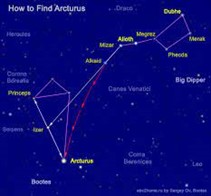
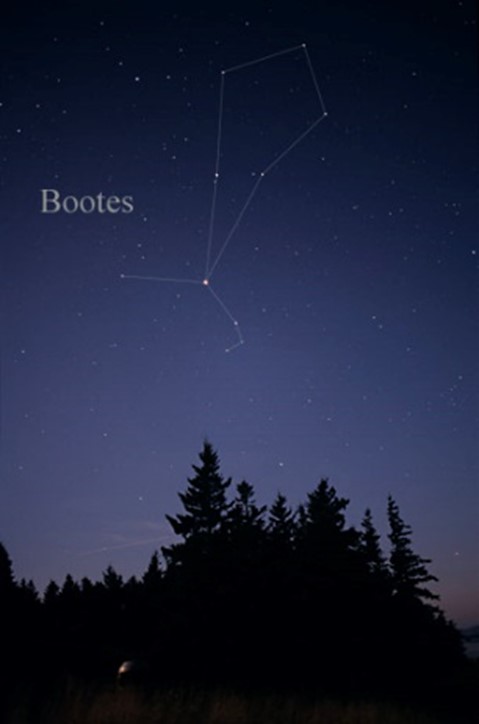
- While you’re in this part of the sky, take a close look at Mizar, the second star from the end of the handle of the Big Dipper. Mizar is really two stars and with a human eye, the second star is just barely visible!
- Close to Bootes is another constellation that is fun to look at is Hercules, the Hunter. I don’t know which is the more powerful hunter—Hercules or Orion! Fortunately, they never meet because Orion is a winter constellation and Hercules is a spring constellation!
- In the constellation of Hercules is a star cluster called M13, near the edge of the “square” of Hercules. With a pair of binoculars, you’ll be able to see it, but it will be faint.
- Below is a close-up schematic for the constellation of Hercules. You’ll also see a close-up photo through a telescope of M13.
- Do you know that the “Big Dipper” IS NOT a constellation? The Big Dipper is a grouping of stars, called an asterism, that resides within the constellation of Ursa Major, the Big Bear! The same holds true for the “Little Dipper.”
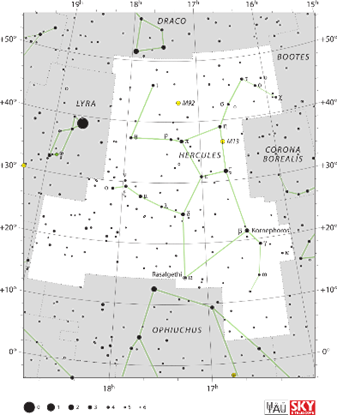
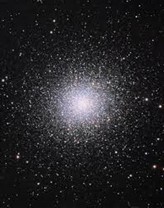
Below is the June Star Chart from Orion Telescopes website
